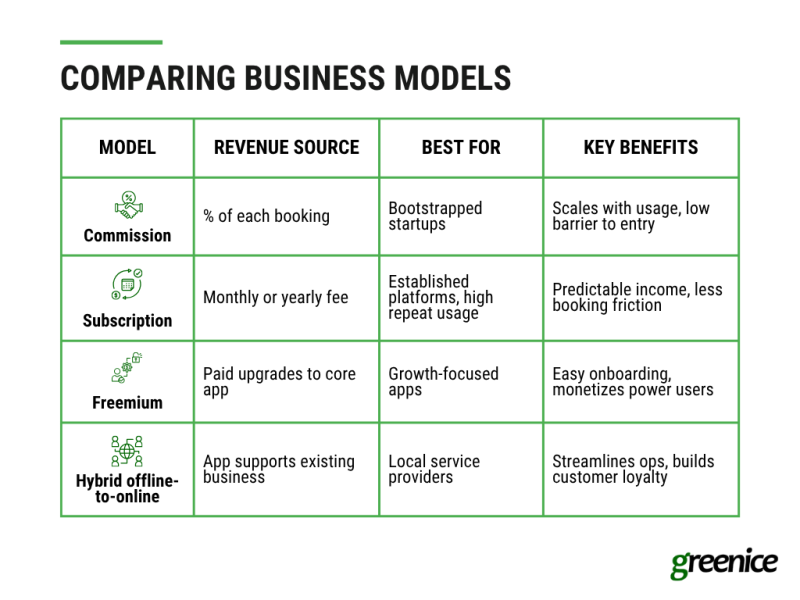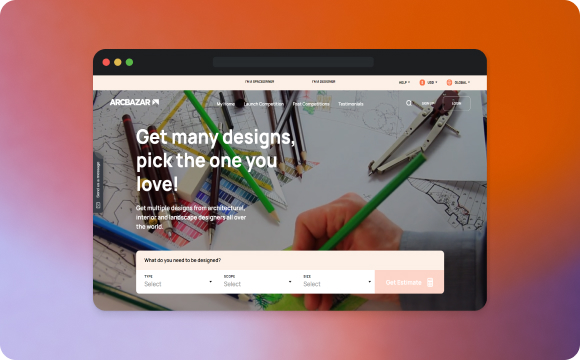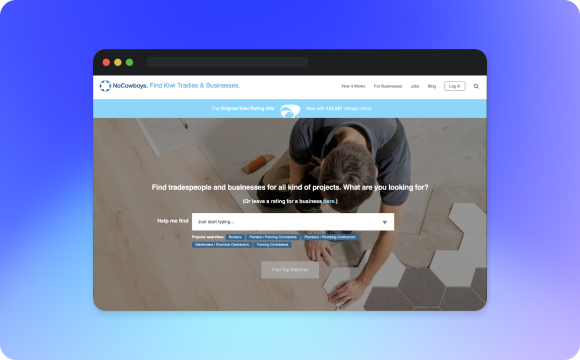Introduction Building a dog walking app like Wag or Rover typically takes around 6-8 weeks for an MVP and starts at $10,000, covering 10+ essential features like secure in-app payments, booking management, and real-time notifications.
Based on our experience developing 50+ marketplace platforms, including a successful dog walking app, we’ve created this step-by-step guide to help you launch with confidence. Whether you're digitizing an existing pet care business or starting a new venture, you'll learn how top apps succeed, what pet owners expect, how much to budget, and how to bring your platform to market - fast.
Key takeaways
- The global pet care market is booming, with strong demand for app-based local services.
- Wag and Rover follow different models: one favors speed, the other trust and flexibility. You can take the best from both platforms to beat the competition.
- An MVP with core features like chat and secure payments can launch from $10K.
- A successful app combines convenience, personalization, and scalability from day one.
Need a tech partner to bring your idea to life? Greenice can help.
So what to start with?
Step 1: Conduct market research
Wondering if building a dog walking app is still a good idea? Yes - because the demand for trusted, on-demand pet care is not only real, it’s growing fast. Before diving into design or development, start by validating your idea with market data. Here’s what current trends reveal:
Understand the market size and growth potential
According to Fortune Business Insights, the global pet care market was valued at $259.37 billion in 2024 and is expected to reach $427.75 billion by 2032, growing at a 6.6% CAGR. In North America alone, the market holds over 33% share, reflecting strong spending habits among pet owners. Dog walking apps represent one of the fastest-growing segments, with a projected 18% CAGR through 2028, fueled by increased pet adoption, mobile app usage, and demand for convenience.
Identify shifts in consumer behavior
Modern pet owners - especially in urban areas - expect more than just availability. They want on-demand access to verified walkers, with real-time GPS tracking, secure in-app payments, and trust signals like background checks and reviews. These features address growing concerns around safety, reliability, and professionalism.
Focus on local demand

While global platforms exist, 60% of users prefer local dog walking options, and this segment is growing faster than national or global services. Local platforms win on trust, responsiveness, and community connection. However global options allow reaching a bigger audience segment.
Still deciding where to launch?
- Is there a clear demand for pet care services in your area that isn’t being met by app-based solutions?
- Are local users likely to trust and adopt mobile-first services for pet care?
Step 2: Analyze the competition. Rover vs Wag
How do you create an app like Wag or Rover for pet owners? Start by studying how the market leaders operate. Wag and Rover dominate the dog walking space, but they do so with very different approaches. A clear understanding of their strengths and trade-offs can help you position your app more effectively - and avoid common pitfalls.

Here is a brief comparison:
| Criteria | Wag | Rover |
| Business model | On-demand dog walking | Full-service pet care marketplace |
| Pricing | Set by platform | Set by individual walkers |
| Commission | ~40% | 20-30% |
| User experience | Instant booking, fast access | Profile browsing, relationship-driven |
| Service types | Primarily dog walking | Walking, sitting, boarding, daycare |
| Target users | Busy pet owners needing convenience | Owners seeking trusted, repeat sitters |
| Walker flexibility | Limited | High (rates, schedule, services) |
Now, let’s look at their differences in detail.
Compare business models and monetization strategies
- Wag focuses on speed and convenience, operating like an on-demand service. It sets standardized rates (around $20-$30 per 30- minute walk), handles background checks, GPS tracking, and payments - all under its brand. However, it charges walkers a steep ~40% commission, limiting their flexibility and earnings.
- Rover, on the other hand, is a broader pet care marketplace. It supports multiple services like sitting, boarding, and daycare, while allowing providers to set their own rates. With 20-30% commission, it attracts more independent, long-term providers who value autonomy and higher earning potential.
Understand user personas and expectations
- Wag is ideal for pet owners who want fast, reliable access to verified walkers - perfect for last-minute bookings.
- Rover appeals to users who seek relationships with trusted providers. The platform emphasizes reviews, meet-and-greets, and repeat bookings, offering a more personalized experience.
On the supply side, Wag serves casual gig workers, while Rover draws committed pet care professionals looking for control over pricing and scheduling.
What to learn and apply
Successful dog walking apps tend to include a mix of:
- Essential trust features: background checks, GPS tracking, secure in-app payments
- Flexible booking options: support both instant and scheduled walks
- Customizable provider profiles: let walkers set rates, availability, and service types
- Multiple service types: expanding into drop-ins, boarding, or daycare increases revenue potential
What to improve on
- Avoid rigid pricing structures - walkers should be able to adapt to local market rates
- Don’t force users into a one-size-fits-all experience - offer both fast booking and community-building tools
Rather than choosing between the Wag or Rover model, combine the best of both. Build a platform that delivers speed and simplicity for new users, while supporting long-term relationships and flexibility for those who want more control. This hybrid approach gives you a strong competitive edge from the start.
How will your app stand out from Wag and Rover?
- Will you compete on speed, trust, flexibility - or a mix of all three?
- Can you offer a more localized, personalized experience that large platforms overlook?
Step 3: Define your business model
How to build a dog walking app to make money? Your revenue model will shape how you attract users, grow your platform, and generate income. Whether you're starting from scratch or digitizing an existing business, choosing the right business model early helps align your product features, pricing, and marketing.
Here are the most common business models used in the pet services industry:
Commission-based marketplace
This is the most widely used model by platforms like Wag and Rover. The app connects pet owners and walkers, and you take a percentage from each booking (typically 15-25%).
Best for: Startups with limited funding looking to scale fast and monetize each transaction.
Why it works: Low barrier to entry, aligns with user activity, and scales with usage.
Subscription plans
Instead of a per-transaction fee, users pay a fixed monthly or annual fee. This could apply to pet owners (unlimited bookings) or walkers (access to leads).
Best for: Platforms with a loyal, repeat user base or established businesses seeking predictable revenue.
Why it works: Less friction during booking and consistent income.
Freemium model
Offer basic features for free and charge for premium ones like real-time tracking, advanced filters, or priority support.
Best for: Tech-savvy platforms aiming for fast growth and in-app upsells.
Why it works: Attracts users with a low entry barrier and creates upgrade opportunities.
Hybrid offline-to-online
If you already run a dog walking or pet care business, an app can streamline your operations - automating bookings, scheduling, payments, and reviews.
Best for: Local pet care businesses ready to go digital.
Why it works: Boosts efficiency, customer satisfaction, and long-term retention.

Step 4: Choose essential features
What are the basic features of a pet walking app? At a minimum, your app should help pet owners book trusted walkers, track their pets in real time, and handle payments securely. To compete with top platforms like Wag and Rover, your app must also offer a smooth, reliable experience for both sides - owners and walkers.
Here are the must-have features for a successful dog walking platform:

1. Profile management
Include separate profiles for owners, dog walkers, and pets. Owners can manage multiple pets, each with details like breed, age, health notes, and behavior. Walkers have profiles with experience, availability, and reviews, helping owners choose the right fit. This structure supports trust, clarity, and personalized service.
2. Booking system (On-demand & recurring)
Support both one-time and repeat bookings. Let users select time slots, choose walkers, and manage their schedule through a built-in calendar.
3. Secure in-app payments
Integrate with providers like Stripe or PayPal to handle payments smoothly. Automate invoices and payouts for a frictionless experience.
4. Ratings & reviews
After each walk, allow pet owners to leave feedback and rate their experience. This builds a trustworthy walker marketplace and encourages quality.
5. In-app messaging
Let owners and walkers communicate directly through chat to clarify instructions, coordinate arrival times, or share updates.
6. Emergency support
Add a panic/SOS button or quick-access emergency contact in case something goes wrong during the walk. It's a small feature that builds big confidence.
7. Push notifications
Send real-time alerts for booking confirmations, reminders, walk status, and payment updates to keep users engaged and informed.
8. Admin dashboard
As the platform owner, you’ll need a web-based dashboard to manage users, monitor activity, resolve disputes, and generate reports.
9. Optional add-ons: GPS, pet photos & verification
Enhance transparency and trust by showing verified walker activity with GPS-tracked routes, walk photos, and detailed summaries (time, distance, duration). These extra touches reassure pet owners and help build long-term loyalty.
Which features are must-haves for your MVP?
- Do your users need full GPS tracking on day one - or can it be phased in later?
- Will extra features like photo updates or route logs help you stand out in your local market?
Need help prioritizing features for your MVP?
Contact UsStep 5: Decide on tech stack
What technologies do you need to build a pet walking app? To support features like booking, real-time chat, and secure payments, your app needs a modern, scalable tech stack. Choosing the right technologies early helps you launch faster and avoid costly rebuilds down the line.
Here’s how to approach key tech decisions for your platform:
1. Start with a web app, then add a mobile app
A smart, cost-effective way to launch your dog walking platform is to begin with a responsive web app. This allows pet owners, walkers, and admins to access your platform from any device while sharing a single backend system.
Because web and mobile apps use the same backend, building the adaptive web version first helps you launch faster, test your idea, and collect feedback - without the upfront cost of mobile development.
Once your MVP is validated, you can move on to building a cross-platform mobile app using React Native. This approach enables you to create a single mobile codebase that works on both iOS and Android—significantly reducing development time and cost compared to fully native apps.
Recommendations:
- Launch your MVP with a responsive web app for both users and admins
- When ready, expand to a React Native mobile app with GPS tracking and push notifications or other nice-to-have features
- Avoid building separate native apps from day one unless you have a large budget and tight mobile-specific requirements
This staged approach gives you the flexibility to grow while staying lean.
2. Select a modern, scalable stack
Your stack should support real-time features, scale with your user base, and be easy to maintain.
Typical tech stack for dog walking apps
| Layer | Recommended tools | Why it works |
| Frontend | For web app: React or Vue For mobile: React Native or Flutter |
Cross-platform, fast development |
| Backend | Laravel (PHP) or Node.js | API-ready, scalable, popular among dev teams |
| Database | Firebase for real-time data; PostgreSQL/MySQL for structured storage |
Handles chat, GPS updates, and bookings effectively |
| Payments | Stripe or PayPal | Secure, PCI-compliant, trusted by users |
| Maps & GPS | Google Maps API or Mapbox | For walk tracking, location-based services |
| Hosting | AWS, Google Cloud, or DigitalOcean for flexible hosting Docker or serverless architecture to handle traffic spikes CDN and caching to improve app speed for location-heavy use |
Handles more bookings, GPS data, and media uploads (e.g., pet photos, activity logs |
This setup strikes a balance between performance, cost-efficiency, and future scalability.
3. Ensure data privacy and compliance
If you plan to launch in Europe or the UK, GDPR compliance is non-negotiable.
Key requirements:
- Collect user consent before storing data
- Allow users to view or delete their data
- Encrypt all sensitive information, including personal and pet data
- Even medical or behavior notes on pet profiles count as sensitive - handling them responsibly builds user trust and protects your business legally.
Still unsure which stack fits your app?
- Need fast launch with wide reach? → Go with PHP/Laravel responsive web app
- Prioritize complex backend logic? → Choose PHP or Node.js + SQL database
- Targeting EU/UK markets? → Make sure your cloud provider and architecture are GDPR-ready
How much does it cost to build a dog walker software?
How much should you budget for a dog walking app? It depends on your feature set, tech stack, and launch goals. A lean MVP (Minimum Viable Product) with essential functionality typically starts at $10,000, while a full-featured platform can range from $40,000 to $100,000+.
MVP development: What’s included?
An MVP is the fastest way to get your app to market and start validating your idea. It includes core features like booking, payments, messaging, and an admin dashboard.
What you get in a typical MVP build:
- UX/UI design - Template or AI-assisted design for mobile and admin panels
- Frontend development - Cross-platform mobile app (React Native or Flutter)
- Backend development - APIs, business logic, and data storage (Laravel or Node.js)
- Quality assurance - Testing across devices to ensure smooth performance
- Project management - Planning, sprints, and progress tracking
Estimated timeline:
- MVP: 6-8 weeks
- Full-featured product: 4-6 months
Post-launch: What ongoing costs should you expect?
Even after launch, you’ll need to keep your app running smoothly and continuously improving. Here are typical monthly costs:
| Expense category | Estimated cost | Notes |
| Hosting | $50-$200/month | AWS, Google Cloud, or DigitalOcean |
| New features | Varies | Each feature is estimated and planned separately after discussion with Project Manager |
| Third-party tools | $30-$100/month | Email, notifications, maps, payment processing |
We also provide a 3-month post-launch guarantee for bug fixes.
MVP vs. full-scale app: What’s the difference?
Let’s compare an MVP to a hypothetical complete app with a few fancier features. How will that differ?
| Scope | MVP ($10K) | Full app ($40K-$100K+) |
| Core features | Booking, payments, chat, admin panel | Everything in MVP plus additional features like subscriptions, smart notifications, advanced analytics, GPS |
| Timeline | 6-8 weeks | 4-6 months |
| Goal | Launch fast, test idea | Scale, differentiate, retain users |
Need a quick project estimate?
Contact UsWhy choose us to build your dog walking app?
At Greenice, we specialize in building custom web and mobile platforms that are fast, scalable, and designed around real user needs. We've already helped a dog walking business launch a successful app that handles bookings, payments, and communication - all tailored to the way they work.

Working with clients from all over the world, we understand the nuances of local markets as well as unique goals and preferences. Whether you’re targeting a single city or planning to expand nationwide, we’ll help you build the right solution from the ground up.
We don’t just code - we partner with you from idea to launch, using design thinking to solve real business problems and deliver results fast. Our development process is transparent, efficient, and focused on helping you go to market quickly with room to grow.
Conclusion
Building a dog walking app is a smart move in a growing market where pet owners value trust, convenience, and transparency. With the right business model, essential features, and a thoughtful development approach, you can launch a platform that stands out—whether you’re starting fresh or digitizing an existing service.
At Greenice, we’ve helped founders bring ideas like this to life, from MVP to full-scale solutions. Ready to take the next step?
FAQ
- How do I compete with Wag or Rover locally?
Focus on local branding, personal relationships, and niche services. Many pet owners prefer a trusted neighborhood provider over a national platform. - Can I make money with a dog walking app?
Yes. Revenue can come from commissions, subscriptions, premium features, and partnerships. Many successful platforms operate profitably in local markets. - What’s the fastest way to launch?
Start with an MVP. Focus on must-have features like booking, payments, and chat. You can expand later based on user feedback. - Should I build a website or mobile app first?
Mobile apps are essential for walk tracking and push notifications, but a simple marketing website helps with SEO and credibility. Ideally, start with both. - Can this work in a small town?
Absolutely. In smaller communities, trust and word-of-mouth are powerful. With the right local marketing, even a small user base can be profitable.
Ready to bring your idea to life?
Contact UsRate this article!
5









 Sign in with Google
Sign in with Google
Comments (0)